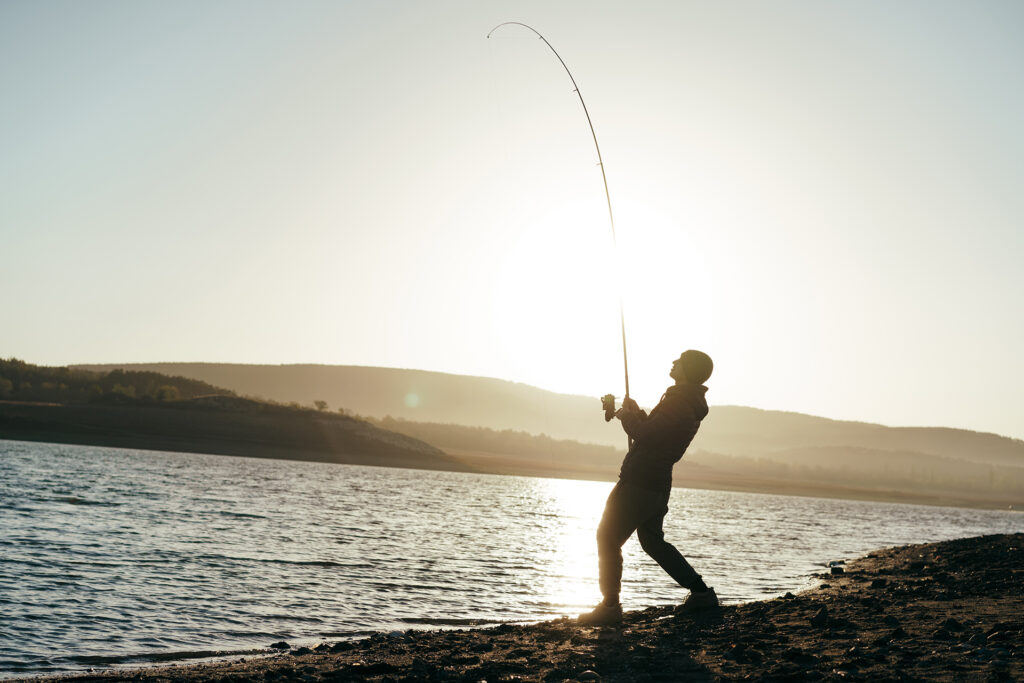Since the arrival of modern braids to the shore fishing scene some years back now, sea anglers have been quick to realise the benefits they can offer. A low diameter to high breaking strain ratio points to immediate advantages, but is it really all it’s cracked up to be?
Jansen Teakle looks at the pros and cons and explains why he feels it’s not a one-size-fits-all situation.
Super Braids
Super braids, as they became known, offer an entirely different fishing experience to traditional monofilament lines, so let’s begin by looking at each style of line and analyse the qualities of each.
The first observation is that braid has zero stretch, whereas mono does stretch.
Braid that does not stretch offers far better bite detection meaning that even bites from small fish are easily recognisable. The stretch in monofilament has a dulling effect on bite detection, though bites are of course still recognisable. Zero stretch is a big plus point for the lure angler who gets a far superior indication of what is happening with the lure in the water. But is the excellent bite detection that Braid offers really such a good thing?

Trial Time
I tried braid on fixed spool reels some years ago now, but ultimately have returned to low-diameter monofilaments. I’ll explain why, but it’s very relevant to the whole bite detection thing. Fishing two rods side by side, one with mono and one with braid, the bites from feeding bream were certainly a lot more enthusiastic on the braid set-up. But when it came to putting fish on the beach, the rod carrying the mono beat the braid set up hands down. Waiting for a bite to develop, leaving it, and even striking early resulted in zero hookups, whereas the mono outfit contained at least one well-hooked fish on each retrieve.

Mentioning this to a highly experienced angler on the south coast, he too had run a similar trial and had faced the same predicament. For whatever reason, even though the initial bites were extremely positive, I suspect that the extra resistance built into the set-up made the fish wary, possibly detecting that something wasn’t right and deterring them from fully taking the bait.
This put me off using braid until I discovered the deep water fishing in Norway when fishing in a depth of anywhere up to 300m. The target species here are also significantly larger, and I suspect that the combination of that incredible depth of water and larger bolder species of fish being targeted ensure that braid is part of the most practical approach.
How Much Strength Do You Need?
The breaking strain-to-diameter ratio of the braid is incredible, and a 60lb braid could easily be the same thickness as a 15lb mono. I believe that this is the main reason that shore anglers load their fixed spools with braid, simply because it’s thinner and will cast a lot further. It has become a go-to for many anglers, especially those fishing over rough ground. The strength this material offers is superb, but it should be noted that lines of this kind of strength do have their negatives. Used straight through to a rig, as many anglers seem to now be doing, there is no weakness in the set-up, other than perhaps for the rig itself where lighter hook snoods can be used to some effect. But when the average rig is just a few feet long, there’s a high chance of the braid making contact with the sea bed and snagging. That’s 60lb of pressure required to snap it off, something that could never be achieved by rod tip pressure alone and could cause catastrophic failure to a reel if the traditional point-and-pull tactic is deployed. The kind of pressure that would be exerted on the reel would be incredible, and the end result could be the entire bail arm and rotor mechanism ripping clear of the reel, and that’s one costly failure! The other consideration is the potential for leaving yards and yards of heavy braid trailing across the sea bed, following a break-off. This can ultimately lead to a horrendous line snag that could render a venue un-fishable, as braid doesn’t deteriorate in the same way as mono. On the face of it, braid sounds perfect, but inexperienced anglers thinking that the sheer strength of super braid is the only consideration have already caused issues at some marks on the Bristol Channel coast where gruesome snag pits await the next angler’s cast.

Used responsibly with a tapered mono shock leader, braid will certainly work, but consider just how strong it really needs to be when faced with the job in hand, and also whether or not you should be using some weak points elsewhere within your set-up. If you do need to pull for a break, ensure that you are not pulling directly on the reel for the reasons outlined above.
To summarise, as good as braid might be for the lure fishing enthusiast and the boat angler, both of whom rely on knowing exactly where their end tackle is and how it’s working, I personally maintain that mono remains king, certainly for my style of fishing here on the Bristol Channel.

